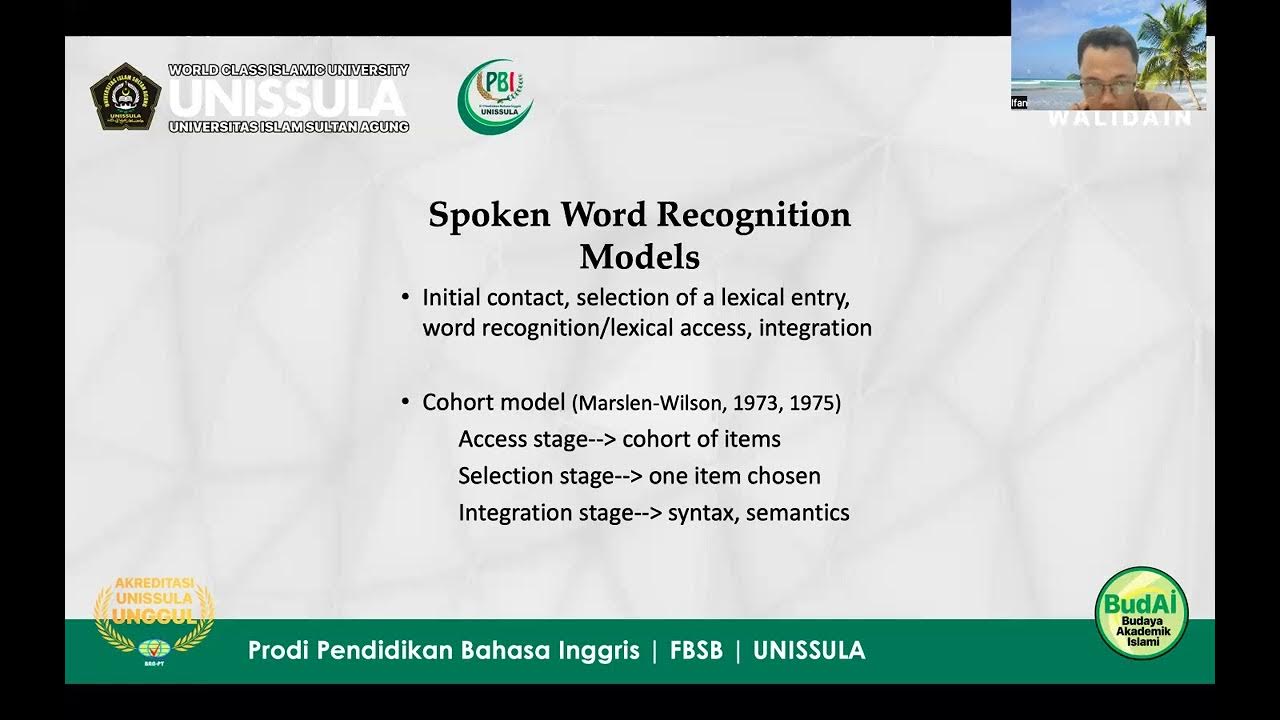Semantic Roles
Summary
TLDRIn this video, the speaker delves into the difference between syntactic and semantic roles in language. While syntactic roles focus on sentence structure, semantic roles concern the meaning and function of words in context. The speaker explains nine key semantic roles: agent, patient, theme, source, goal, location, experiencer, stimulus, and force, providing examples to illustrate each. The video highlights how words like 'dog' and 'him' shift between roles depending on sentence structure, helping viewers understand the nuances of sentence meaning. Practical exercises are also suggested to reinforce learning.
Takeaways
- 😀 Syntactic roles like subject and object focus on sentence structure, while semantic roles focus on the meaning and actions behind the words.
- 😀 Syntactic roles are concerned with word order and their position relative to the verb, such as subjects typically appearing before the verb.
- 😀 The sentence 'The dog bit him' demonstrates how the subject (dog) performs the action and the object (him) is affected by it.
- 😀 In contrast, 'He was bitten by the dog' swaps the syntactic roles, but the meaning remains the same, showing the difference between syntax and semantics.
- 😀 Semantic roles include agent, patient, theme, source, goal, location, experiencer, stimulus, and force, each describing the function of a noun in a sentence.
- 😀 An agent performs an action deliberately, like the dog biting in 'The dog bit him.'
- 😀 A patient is affected by the action, like 'him' in 'The dog bit him,' which undergoes a change as a result of the action.
- 😀 A theme receives an action without changing fundamentally, such as the book in 'John gave the book to the woman.'
- 😀 The source is the origin of something, like 'Mexico' in 'John came from Mexico,' typically indicated by 'from.'
- 😀 A goal is the intended end state of an action, like 'school' in 'She walked to school,' usually preceded by 'to.'
Q & A
What is the main difference between syntactic and semantic roles?
-Syntactic roles focus on the structure of the sentence, like the subject and object, whereas semantic roles focus on the meaning and function of the words, describing what entities are doing or experiencing in the context of an action.
Why is word order important in determining syntactic roles in English?
-In English, word order is significant because subjects typically appear to the left of the verb, and objects usually follow the verb. This structure helps identify the syntactic roles of words in a sentence.
Can the same sentence have different syntactic roles? Give an example.
-Yes, the same sentence can have different syntactic roles. For example, in 'The dog bit him' and 'He was bitten by the dog,' 'dog' and 'he' swap their syntactic roles, even though the meaning remains largely the same.
What is an 'agent' in semantic roles?
-An agent is an entity that performs an action deliberately. In the sentence 'The dog bit him,' the dog is the agent because it is intentionally carrying out the action of biting.
What is the difference between a 'patient' and a 'theme' in semantic roles?
-A patient is an entity that receives an action and is changed by it (e.g., 'him' in 'The dog bit him'), while a theme is an entity that receives an action but does not undergo a fundamental change (e.g., 'the book' in 'John gave the book to the woman').
What is the semantic role of 'Mexico' in the sentence 'John came from Mexico'?
-In this sentence, 'Mexico' serves as the source, as it is the origin from where John came.
In the sentence 'She walked to school,' what is the semantic role of 'school'?
-In this sentence, 'school' is the goal because it represents the intended end state or destination of the action.
How does the role of 'location' differ from 'goal' in semantic roles?
-A location is the place where an action occurs (e.g., 'the zoo' in 'He cried at the zoo'), while a goal represents the intended end state or destination of an action (e.g., 'school' in 'She walked to school').
What is the role of 'experiencer' in a sentence?
-An experiencer is an entity that passively undergoes an action, typically related to emotional or sensory responses. For example, in 'She saw the door,' 'she' is the experiencer.
In the sentence 'The storm destroyed the house,' what is the semantic role of 'storm'?
-In this sentence, 'storm' is a force, as it is a natural entity that non-deliberately causes the action of destruction.
Outlines

هذا القسم متوفر فقط للمشتركين. يرجى الترقية للوصول إلى هذه الميزة.
قم بالترقية الآنMindmap

هذا القسم متوفر فقط للمشتركين. يرجى الترقية للوصول إلى هذه الميزة.
قم بالترقية الآنKeywords

هذا القسم متوفر فقط للمشتركين. يرجى الترقية للوصول إلى هذه الميزة.
قم بالترقية الآنHighlights

هذا القسم متوفر فقط للمشتركين. يرجى الترقية للوصول إلى هذه الميزة.
قم بالترقية الآنTranscripts

هذا القسم متوفر فقط للمشتركين. يرجى الترقية للوصول إلى هذه الميزة.
قم بالترقية الآن5.0 / 5 (0 votes)






